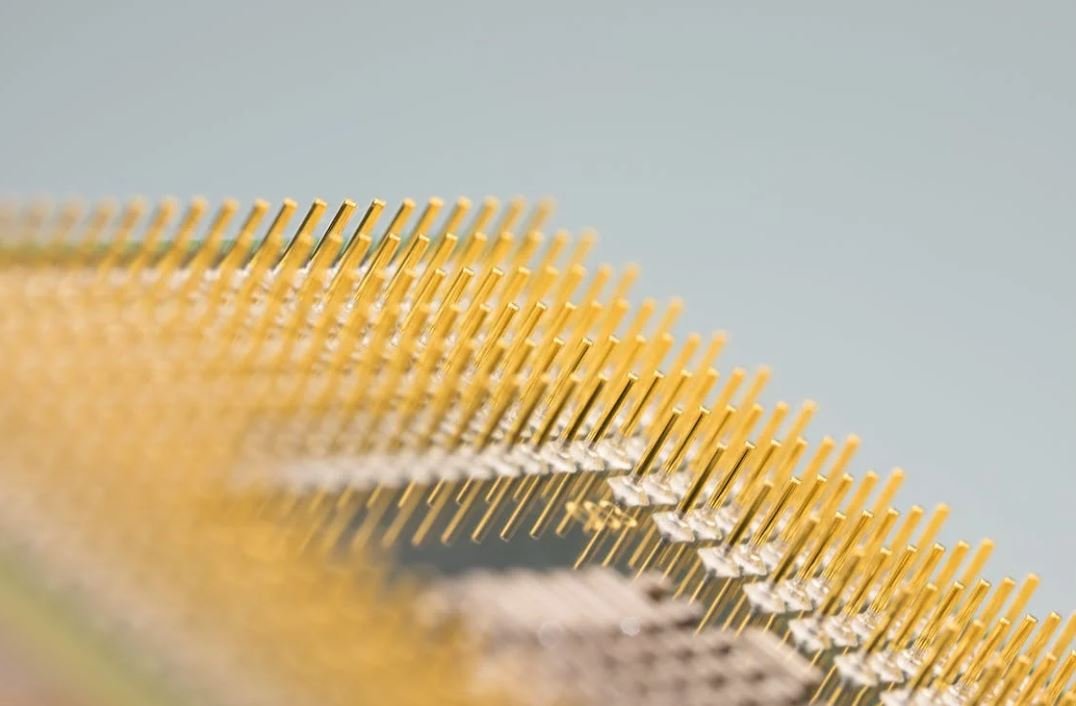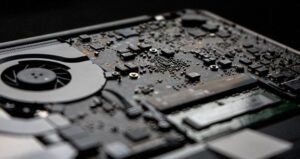Deepfakes: Are They Real?
Deepfakes have become increasingly prevalent in the digital era, raising concerns about the authenticity of media content. These manipulated videos or images are created using powerful machine learning algorithms, making it challenging to distinguish between real and fake. Understanding the nature and impact of deepfakes is essential in order to navigate this new age of digital deception.
Key Takeaways
- Deepfakes are digitally manipulated media content generated using advanced machine learning algorithms.
- They have the potential to spread misinformation, deceive the audience, and damage reputations.
- Technological advancements have made deepfakes increasingly realistic and difficult to detect.
- Educating oneself about deepfakes and staying vigilant is important to avoid falling victim to their deception.
Understanding Deepfakes
Deepfakes refer to media content, such as videos or images, that have been altered using artificial intelligence algorithms. These algorithms analyze and manipulate existing audio or visual data to create a new synthetic piece that appears real but is actually fake. The term “deepfake” is derived from a combination of “deep learning” and “fake.”
Deepfakes enable the creation of convincing but completely fabricated media content.
The Evolution of Deepfakes
Deepfakes have evolved significantly in recent years due to advances in machine learning techniques and computing power. Initially, deepfakes were relatively crude and easy to identify, but with improvements in algorithms and access to large datasets, their realism has dramatically improved. As a result, distinguishing between real and fake has become much more challenging.
Modern deepfakes are so realistic that even experts struggle to detect them with the naked eye.
The Impact of Deepfakes
The rise of deepfakes poses various threats to individuals and society. They can be used to spread false information, distort public opinion, and manipulate public figures. Politicians, celebrities, and ordinary people can all fall victim to deepfake attacks, resulting in serious consequences such as reputational damage and even the potential for social unrest.
Deepfakes have the potential to disrupt trust in media and undermine the credibility of information sources.
Methods to Detect Deepfakes
As technology evolves, so do the methods to detect deepfakes. Researchers are constantly developing new tools and techniques to identify manipulated content. Some approaches rely on analyzing subtle inconsistencies in lighting, shadows, or facial movements, while others use machine learning algorithms to detect patterns and anomalies in the generated content.
- Visual artifacts such as unrealistic facial features or unnatural movements can indicate the presence of a deepfake.
- Deepfake detection tools often use comparison algorithms to analyze the inconsistencies between the original and the manipulated content.
- Data forensics techniques help identify discrepancies in metadata, timestamps, or compression artifacts.
| Date | Incident | Consequences |
|---|---|---|
| 2018 | A deepfake video of former President Barack Obama is created and goes viral. | Raises concerns about the potential for political manipulation and fake news. |
| 2019 | A deepfake pornographic video targeting celebrities surfaces online. | Highlights the danger of using deepfake technology for non-consensual purposes. |
Combatting Deepfakes
The fight against deepfakes involves a multi-faceted approach. Raising awareness and educating the public about the existence and potential risks of deepfakes is crucial. Implementing stricter regulations and legal frameworks to deter the creation and distribution of malicious deepfakes can also help. Technology companies and social media platforms play a vital role by developing sophisticated detection tools and implementing proactive policies to identify and remove deepfake content.
| Tool | Description |
|---|---|
| Deeptrace | A deepfake detection platform that analyzes visual and audio cues to detect manipulated content. |
| Truepic | A platform that uses blockchain technology to verify the authenticity of photos and videos. |
Staying Vigilant
In this era of deepfakes, it is crucial to be vigilant and cautious when consuming media. Fact-checking information from trusted sources, scrutinizing subtle details in videos or images, and being aware of the potential for digital manipulation are important steps to safeguard against falling victim to deepfakes. By actively staying informed and educated, individuals can play a role in combating the spread of misinformation and preserving the integrity of media.
The Future of Deepfakes
The advancement of deepfake technology poses ongoing challenges. As deepfakes become even more sophisticated, it is essential to continue developing robust detection methods and countermeasures. Collaborative efforts between technology experts, governments, and the public are crucial in mitigating the negative impacts of deepfakes and maintaining trust in the digital age.
With continued development and vigilant efforts, we can navigate the complexities of deepfakes and protect the integrity of media.

Common Misconceptions
Misconception 1: Deepfakes can be easily detected
One common misconception about deepfakes is that they can be easily detected. However, the reality is that deepfake technology has advanced significantly, making it increasingly difficult to distinguish between real and fake videos or images. Some misconceptions related to this include:
- Deepfakes always have visible glitches or artifacts
- Traditional methods of forensic analysis can easily identify deepfakes
- Humans can easily spot deepfakes just by looking at them
Misconception 2: Deepfakes are only used for malicious purposes
Another common misconception is that deepfakes are exclusively used for malicious purposes, such as spreading fake news or manipulating people. However, deepfake technology can also be used for positive applications. Some misconceptions related to this include:
- All deepfakes are created with the intention of deceiving or harming others
- Deepfakes are only used to manipulate political or public figures
- There are no legitimate uses or benefits of deepfake technology
Misconception 3: Deepfake technology is only accessible to experts
Many people believe that deepfake technology is only accessible to experts or tech-savvy individuals. However, the reality is that there are now user-friendly deepfake apps and software available to the general public, requiring minimal technical skills to use. Some misconceptions related to this include:
- Creating deepfakes requires extensive knowledge of artificial intelligence
- Deepfake software is expensive and inaccessible for the average user
- Only experts can produce high-quality deepfake content
Misconception 4: Deepfakes are the only form of digital manipulation
Deepfakes are often thought of as the primary form of digital manipulation, leading to the misconception that all digitally manipulated content is a deepfake. However, there are various other techniques and methods used for digital manipulation. Some misconceptions related to this include:
- If a video is manipulated, it must be a deepfake
- Deepfakes are the most concerning form of digital manipulation
- Aside from deepfakes, there are no other significant concerns regarding manipulated content
Misconception 5: Deepfake technology always produces flawless results
Finally, there is a misconception that deepfake technology always produces flawless results that are indistinguishable from reality. While deepfake technology has indeed become highly sophisticated, there are still often telltale signs that experts can look for to determine if a media is a deepfake. Some misconceptions related to this include:
- All deepfakes are of high quality and difficult to distinguish from reality
- No technology or tools exist to uncover deepfakes
- If a deepfake is of poor quality, it can easily be detected as fake

Introduction
Deepfakes have become increasingly prevalent in recent years, raising concerns and sparking debates surrounding their authenticity and potential implications. This article presents ten tables that aim to shed light on various aspects of deepfakes, including their usage, detection techniques, and notable cases. Each table contains data and information that contributes to a better understanding of the deepfake phenomenon.
Table of Deepfake Usage by Industry
Illustrating the diverse range of industries that have adopted deepfake technology for various purposes.
| Industry | Usage |
|—————–|——————————————-|
| Entertainment | Create scenes with deceased actors |
| Politics | Manipulate speeches to distort statements |
| Adult | Swap faces onto pornographic videos |
| Journalism | Generate fake news articles |
| Gaming | Animate realistic facial expressions |
| Advertising | Promote products using fake endorsements |
| Education | Create interactive historical reenactments |
| Law Enforcement | Generate suspect identification videos |
| Healthcare | Simulate patient reactions for training |
| Science | Generate synthetic data for research |
Table of Deepfake Detection Techniques
Providing an overview of different methods employed to identify and mitigate the impact of deepfake content.
| Technique | Description |
|————————-|————————————————————————-|
| Facial Biometrics | Analyze facial features for discrepancies between the original and fake |
| Audio Analysis | Identify inconsistencies and artifacts in the speech patterns |
| Reverse-Engineering | Study model creation methods to unveil deepfake traces |
| Metadata Examination | Analyze file attributes and timestamps to detect tampering |
| Eye Movement Analysis | Track eye movements to identify irregular patterns |
| Synthetic Artifact Focus| Detect digital artifacts specific to deepfake image generation |
| Microexpressions | Scrutinize subtle changes in facial expressions |
| Speech Signal Analysis | Examine acoustic patterns for anomalies in the spoken content |
| Contextual Analysis | Evaluate the broader context of the video to assess its credibility |
| Manipulation Artefact | Identify distortions or inconsistencies caused by deepfake manipulation |
Table of Notable Deepfake Cases
Highlighting several high-profile instances where deepfake technology made waves in media and public consciousness.
| Case | Summary |
|————————|—————————————————————————————————————————–|
| Obama Deepfake | A deepfake video of Barack Obama circulated where he delivered an altered speech, raising alarms about its potential misuse |
| Zuckerberg Deepfake | A manipulated video of Facebook CEO Mark Zuckerberg showcased his supposed control over user data, emphasizing privacy concerns |
| Bill Hader Deepfake | A video surfaced exhibiting actor Bill Hader’s face morphing into various celebrities when impersonating them during interviews |
| Pornstar Deepfakes | Numerous adult entertainment actresses’ faces have been substituted onto others, amplifying concerns over non-consensual content|
| Tom Cruise Deepfakes | Uncanny deepfake videos emerged featuring Tom Cruise performing stunts and antics, fueling discussions on identity theft |
| Narendra Modi Deepfake | A subversive deepfake of the Indian Prime Minister depicted him endorsing controversial policies, triggering political turmoil |
| Princess Leia Deepfake | A realistic deepfake showed late actress Carrie Fisher as Princess Leia in new scenes, raising ethical questions about posthumous performances |
| Elon Musk Deepfakes | Deepfake videos with Elon Musk’s likeness portrayed him misleadingly making outrageous statements, leading to public confusion |
| Queen Elizabeth Deepfake | An altered video of Queen Elizabeth II revealed her rapping, creating a humorous yet thought-provoking discourse on deepfakes |
| Morgan Freeman Deepfake| Authentic-looking deepfake videos emerged featuring Morgan Freeman reciting fabricated speeches, highlighting authenticity concerns |
Table of Deepfake Impact Perceptions
Examining the varied perspectives and opinions surrounding the potential impact of deepfakes.
| Perception | Description |
|——————————–|————————————————————————————————————————–|
| Political Manipulation | Fear that deepfakes can undermine elections and deceive voters |
| Privacy Invasion | Concerns regarding the unauthorized use of individuals’ likenesses and potential damage to reputations |
| Fake News Amplification | Deepfakes’ potential to propagate false information in an increasingly digitalized media landscape |
| Entertainment Enhancement | Deepfakes as a tool to enhance visual effects in films, video games, and other creative industries |
| Legal Implications | Examination of the legality surrounding deepfake creation and dissemination |
| Cybersecurity Risks | Potential threats deepfakes pose to data integrity, trust in institutions, and national security |
| Technological Advancements | The rapid progression of deepfake technology and its potential positive applications |
| Social Media Misuse | Concerns regarding the viral spread and circulation of deepfake content on social media platforms |
| Psychological Impacts | Exploration of how deepfakes can influence public perception, trust, and psychological well-being |
| Authentication Challenges | Difficulties in verifying the authenticity of visual and audio content in the wake of deepfake proliferation |
Table of Deepfake Detection Tools
Exploring various software and methods designed to detect the presence of deepfake media.
| Tool | Description |
|——————–|——————————————————————————|
| Deeptrace | AI-powered software that performs deepfake identification and analysis |
| FaceForensics++ | A tool that combines various forensic techniques to identify deepfake videos |
| Truepic | Image and video verification platform that detects tampering and manipulation|
| Amber Authenticate | A blockchain-based solution that assists in verifying imagery and videos |
| DeepGuard | Deep learning-based technology that analyzes video credibility |
| MFAuthenticator | A smartphone app that helps authenticate the legitimacy of media files |
| MetaDefender | Scans files for metadata inconsistencies and potential manipulation signs |
| Aletheia | Deepfake detection software that uses reverse-engineering techniques |
| Sensity | Social media monitoring platform that identifies and flags deepfake content |
| OpenFace | Open-source facial recognition toolkit that can assist in detecting deepfakes |
Table of Deepfakes in Media Attention
Highlighting the media coverage received by deepfake-related incidents.
| Incident | Media Attention |
|—————————–|—————————————————————————|
| 2018 University Lecture | A doctored video of a university professor became viral, raising concerns |
| Presidential Election 2020 | Deepfakes’ potential impact on the election garnered widespread coverage |
| Deepfake Legislation | Legislative efforts to combat deepfakes received extensive press coverage |
| Celebrity Deepfake Scandals | High-profile incidents involving celebrities were widely reported |
| Deepfake Detection Contest | Competitions aimed at developing better deepfake detection solutions |
| Deepfake Ethics Debates | Discussions on moral implications and ethical dilemmas surrounding deepfakes |
| Deepfake Academic Research | Scholarly papers addressing various aspects of deepfake technology |
| Deepfake Parody Videos | Humerous deepfake parodies found their way into mainstream media |
| Deepfake Film Productions | Films incorporating deepfake technology made headlines in the industry |
| Celebrity Deepfake Responses| Celebrities sharing their concerns and experiences with deepfakes |
Table of Deepfake Generator Techniques
Outlining different deepfake generation methods that utilize various algorithms and technologies.
| Technique | Description |
|———————|—————————————————————————————————————————-|
| GANs | Generative Adversarial Networks form the basis of many deepfake creation algorithms, using two neural networks in opposition|
| Autoencoders | Deep learning models used to compress and recreate the input, enabling face swapping and video manipulation |
| Neural Texture Synthesis| Reconstruction of a person’s face onto another using a prior image database |
| Image-to-Image Translation| Transforming images from one domain to another, allowing realistic face swapping and scene translations |
| Pose and Gesture Transfer| Transferring and mapping facial expressions, gestures, and body posture across individuals |
| Face Reconstruction | 3D modeling techniques used to reconstruct a person’s face from available images |
| Lip Syncing | Aligning and synchronizing audio and visual components to create realistic speech movements |
| Style Transfer | Adopting the artistic style of one image or video and applying it to another, generating unique deepfake visualizations |
| Motion Capture | Tracking and transferring human movements, allowing realistic expressions and body language simulations |
| Reinforcement Learning| Utilizing trial-and-error techniques to refine deepfake generation algorithms |
Table of Deepfake Education Initiatives
Examining educational efforts to raise awareness, educate, and combat the negative impact of deepfakes.
| Initiative | Description |
|————————————————|—————————————————————————————————————————————————————————————————————————————————————————————————————————————–|
| Deepfake Awareness Campaigns | Awareness campaigns that aim to educate the public about the potential dangers and consequences of deepfakes, often through social media, testimonies, and workshops |
| University Deepfake Courses | University-organized courses and programs that cover various aspects of deepfakes, including creation techniques, detection methods, ethical considerations, and their implications on media and society |
| Deepfake Detection Research Collaboration | Collaborative efforts between research institutions, tech companies, and government agencies to investigate, develop, and share deepfake detection tools, methods, and AI models, fostering an environment of collaboration to stay one step ahead of rapidly evolving deepfake technology |
| Public Service Announcements (PSAs) | Broadcasted messages across various media platforms with the goal of increasing public awareness of deepfakes and encouraging critical thinking and skepticism when consuming media |
| Deepfake Media Literacy Programs | Educational programs that equip individuals with the skills and knowledge to critically analyze and identify deepfakes, empowering them to make informed judgments and differentiate between authentic and manipulated content |
| Online Deepfake Resources | Comprehensive online resources, including websites, forums, and libraries dedicated to providing accurate information, tutorials, and resources to help individuals stay informed, detect deepfakes, and access reliable tools |
| Law Enforcement Training Programs | Specialized training initiatives for law enforcement agencies, equipping them with the necessary knowledge and tools to identify and handle deepfakes in criminal investigations and fraud cases |
| Collaboration with Influencers and Content Creators| Partnering with influential individuals and content creators to raise awareness about deepfakes among their followers and subscribers, leveraging their platforms to disseminate accurate information and debunk misconceptions |
| Deepfake Research Grants | Financial support provided to researchers and academics to conduct studies and investigations into deepfake technology and its various implications, fostering deeper understanding and driving advancements in detection, mitigation, and legislation |
| Open-source Deepfake Detection Projects | Collaborative open-source projects aimed at developing tools, algorithms, and frameworks that detect and combat deepfakes, promoting transparency and accessibility, and allowing a broader range of individuals and organizations to contribute to the fight against deepfake misinformation and deception |
Conclusion
Through exploring the usage, detection techniques, notable cases, and various perceptions surrounding deepfakes, it becomes evident that this emerging technology carries both significant concerns and potential benefits. As deepfake technology continues to advance, so too must efforts in detection and education. By staying vigilant, fostering collaboration, and promoting media literacy, society can better navigate the complex landscape of deepfakes while harnessing the positives it may bring.
Frequently Asked Questions
What are deepfakes?
Deepfakes are manipulated videos or audios that use artificial intelligence (AI) algorithms to replace the face or voice of an individual in an existing video with someone else’s face or voice.
How do deepfakes work?
Deepfakes are created using deep learning models known as Generative Adversarial Networks (GANs). These networks are trained on a large dataset of real videos and images and learn to generate realistic fake content by capturing the patterns and characteristics of the training data.
Can deepfakes be detected?
Detecting deepfakes can be challenging as they are designed to appear highly realistic. However, researchers are continuously developing and improving detection methods using techniques such as analyzing facial features, inconsistencies in lighting, reflections, and unnatural movements.
Are deepfakes becoming more realistic?
Yes, deepfake technology is constantly evolving, making it easier to create highly realistic fake videos and audios. This progress is driven by advancements in machine learning and computer graphics, raising concerns about the potential misuse of this technology.
What are the potential risks of deepfakes?
Deepfakes pose numerous risks, including spreading false information, damaging reputations by creating fake videos or audios that appear authentic, blackmail, fraud, and even political manipulation.
Are deepfakes illegal?
The legality of deepfakes varies depending on jurisdiction. In some cases, deepfakes may violate privacy, intellectual property, or defamation laws if they are used to harm or deceive others. Legislation regarding deepfakes is still in its early stages in many countries.
How can I protect myself from deepfakes?
To protect yourself from deepfakes, it is important to be cautious when consuming media online. Be wary of unverified or suspicious sources, use reliable fact-checking websites, and encourage media literacy to be able to identify potential deepfake content.
Can deepfakes be used for positive purposes?
While deepfakes are often associated with negative consequences, there are positive use cases as well. These can include entertainment, film industry, artistic expression, and even education where deepfake technology can be used ethically and responsibly.
How are social media platforms addressing the issue of deepfakes?
Social media platforms are taking steps to combat deepfakes by investing in detection technologies and partnering with experts in the field. Some platforms are implementing policies to remove or label deepfake content, providing users with a better understanding of the authenticity of what they are seeing.
What is being done to regulate deepfake technology?
While regulations around deepfake technology continue to evolve, governments, researchers, and technology companies are working together to develop guidelines and legislation to combat the misuse of deepfakes. These efforts aim to strike a balance between protecting individuals and preserving technological advancements.




